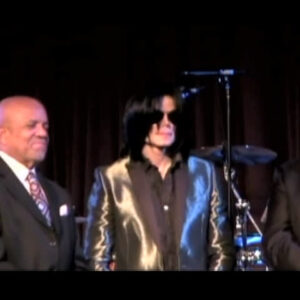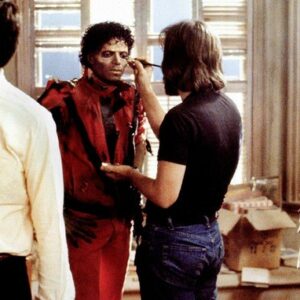Introduction:
Tina Turner is not just a name, she’s a legacy, a force of nature that has transcended generations. Her voice, filled with soul and fire, made her a global music sensation, but her influence didn’t stop at her sound. Her image—powerful, elegant, and fierce—has adorned the covers of the world’s most influential magazines, solidifying her status as a music and cultural icon. Magazine covers have played a crucial role in defining Tina Turner’s brand, capturing key moments that reflect her career’s evolution, her struggles, and ultimately, her triumphs. These covers are more than just photographs; they are visual milestones that represent her journey from a rock queen to a symbol of resilience and empowerment.
From her bold debut as the Queen of Rock & Roll to her graceful transition into a timeless fashion icon, Tina’s magazine covers have not only chronicled her life but also shaped how the world perceives her. Each cover tells a story of transformation, strength, and the ever-evolving nature of her brand. Let’s delve into five of the most iconic magazine covers that marked pivotal moments in Tina Turner’s legendary career.
Rolling Stone (1986) – The Queen of Rock & Roll
Few images have captured Tina Turner’s raw power quite like her appearance on the 1986 cover of Rolling Stone. At a time when the music industry was dominated by men, Turner smashed through the glass ceiling with a cover that cemented her status as the Queen of Rock & Roll. This was more than just a magazine feature—it was a cultural moment. She wasn’t just making music; she was reshaping it, redefining what it meant to be a woman in rock.
Turner, dressed in her signature leather and sporting that iconic mane of hair, commanded the cover with a stance that was both defiant and confident. The boldness of her pose—hands on hips, chin slightly lifted—reflected her powerful persona, a woman who had not only conquered the music charts but also risen above personal struggles that would have crushed many.
This cover came after the success of her album Private Dancer, a record that revived her career after years of tumultuous personal and professional challenges. The Rolling Stone cover encapsulated that triumph, representing Turner as a survivor and as a dominant force in an industry that, at the time, had little space for women, let alone black women in rock.
Turner’s appearance on Rolling Stone reinforced her brand as a symbol of strength and independence. In an era where the music world was driven by male egos, Turner stood tall, unbreakable, and unbothered by the odds stacked against her. This cover would go down in history as a testament to her position as a musical powerhouse and a symbol of resilience.
Vogue (1989) – Beauty and Elegance Reimagined
If Rolling Stone showcased Tina Turner as the Queen of Rock, her appearance on Vogue in 1989 showed the world a different side of her—a side that was glamorous, elegant, and sophisticated. Vogue, the fashion bible, elevated her image from rock legend to a style icon, proving that Turner was not only versatile in her music but also in her visual presentation.
On this cover, Tina exudes a softer, more refined beauty. Gone were the gritty leather jackets and wild hair of her rock persona. Instead, she was draped in high fashion, with every detail—from her sleek dress to her polished makeup—emphasizing her elegance. But make no mistake, the fierceness was still there, just redefined through the lens of fashion.
This transformation signaled her entrance into a new phase of her career. No longer confined to the boundaries of rock, Turner was stepping into the broader cultural realm of beauty, style, and fashion. The Vogue cover allowed her to reinvent herself, to show the world that she was not just a rock star, but a woman of grace and beauty who could stand shoulder to shoulder with the world’s top fashion icons.
Through this cover, Turner’s brand expanded beyond music into the worlds of fashion and beauty. She was no longer just a singer—she was a symbol of class, poise, and versatility, capable of navigating the ever-changing landscape of fame with ease. Tina’s appearance on Vogue was a visual representation of her transformation from a rock icon to a timeless figure in popular culture.
Time (1985) – A Triumph of Resilience
In 1985, as Tina Turner’s career soared with the success of Private Dancer, Time magazine put her on their cover, capturing a pivotal moment in her career and life. The cover was not just about music; it was about a woman who had survived and thrived against all odds. It showcased Turner as a symbol of resilience, a woman who had overcome personal and professional struggles to reclaim her place in the spotlight.
The visuals on this cover were striking. Turner stood confidently, her face expressing a calm yet undeniable strength. The stark simplicity of the cover—free of excessive glamor or distractions—allowed her raw power to shine through. This was a woman who had faced adversity head-on and emerged victorious. The timing of the cover was crucial, coming shortly after she had left behind a turbulent marriage and a period of relative obscurity, only to return stronger than ever.
Turner’s Time cover was a declaration: she was back, and she was here to stay. It also emphasized the human side of her story—the narrative of survival, reinvention, and success that resonated with millions. More than just a music icon, Turner became a beacon of hope for those facing their own struggles, demonstrating that no matter how difficult the circumstances, it was possible to rise above and thrive.
This cover solidified her brand as a survivor and a triumphant force in the entertainment industry. It wasn’t just about the music anymore; it was about what Tina Turner represented—a woman of endurance, perseverance, and unmatched tenacity.
Essence (1991) – Representing Empowerment and Legacy
By 1991, Tina Turner was not only a music icon but also a symbol of empowerment, especially for women of color. Her appearance on the cover of Essence magazine that year captured the essence of her journey from humble beginnings to global superstardom. The cover image portrayed Turner in all her regal glory, her posture exuding confidence and self-assurance.
The importance of this cover cannot be overstated. Essence, a magazine that celebrated black women’s beauty, culture, and achievements, featured Turner as the embodiment of resilience and success. Her life story—a tale of overcoming abuse, discrimination, and career setbacks—resonated deeply with the magazine’s audience. Here was a woman who had defied expectations, not only as a black woman in a predominantly white and male-dominated industry but as an artist who had transcended genres and boundaries.
The visuals on the Essence cover showed Turner in a regal light, her poise and grace capturing the hearts of readers. This image wasn’t just about beauty or fashion; it was about legacy. Tina Turner represented a lineage of strong black women who had paved the way for others, and this cover celebrated her place in that history.
The Essence cover tied Turner’s brand to empowerment, not just for herself but for all women striving to break barriers and claim their space in the world. It was a powerful reminder of her role as a trailblazer, an inspiration to women everywhere who looked to her as a symbol of what could be achieved through perseverance and strength.
People (2000) – Celebrating a Career in Full Bloom
As Tina Turner approached her 60th birthday, her appearance on the cover of People magazine in 2000 was a celebration of a career that had spanned decades, defied expectations, and broken barriers. The cover featured a more relaxed, confident Tina, her face radiating the peace that comes with a life fully lived and a career fully realized.
The significance of this cover lay in its message: Tina Turner was not bound by the traditional rules of fame and age. In an industry known for its obsession with youth and novelty, Turner had endured, evolving with grace and continuing to captivate audiences around the world. The visuals of the cover showed a woman comfortable in her own skin, at peace with her legacy, and ready for whatever the future held.
Turner’s appearance on People reinforced her brand as a timeless icon. She had transcended the fleeting nature of fame, establishing herself as an enduring figure who would be remembered not just for her music, but for the indomitable spirit that defined her. This cover was a testament to her longevity and the way she had consistently reinvented herself, remaining relevant and beloved by fans old and new.
Conclusion:
Tina Turner’s magazine covers are more than just snapshots of her career—they are a visual narrative of her evolution as an artist, a woman, and an icon. Each cover captures a different facet of her life and brand, from the raw power of her rock stardom to the elegance of her fashion reinvention, from her triumph over adversity to her enduring legacy as a trailblazer for women, especially women of color.
These covers have not only chronicled her milestones but also shaped public perception of who Tina Turner is: a force of nature, a survivor, and a timeless icon. Her ability to evolve, both musically and visually, has kept her relevant for decades, proving that true stars never fade—they only shine brighter with time.





